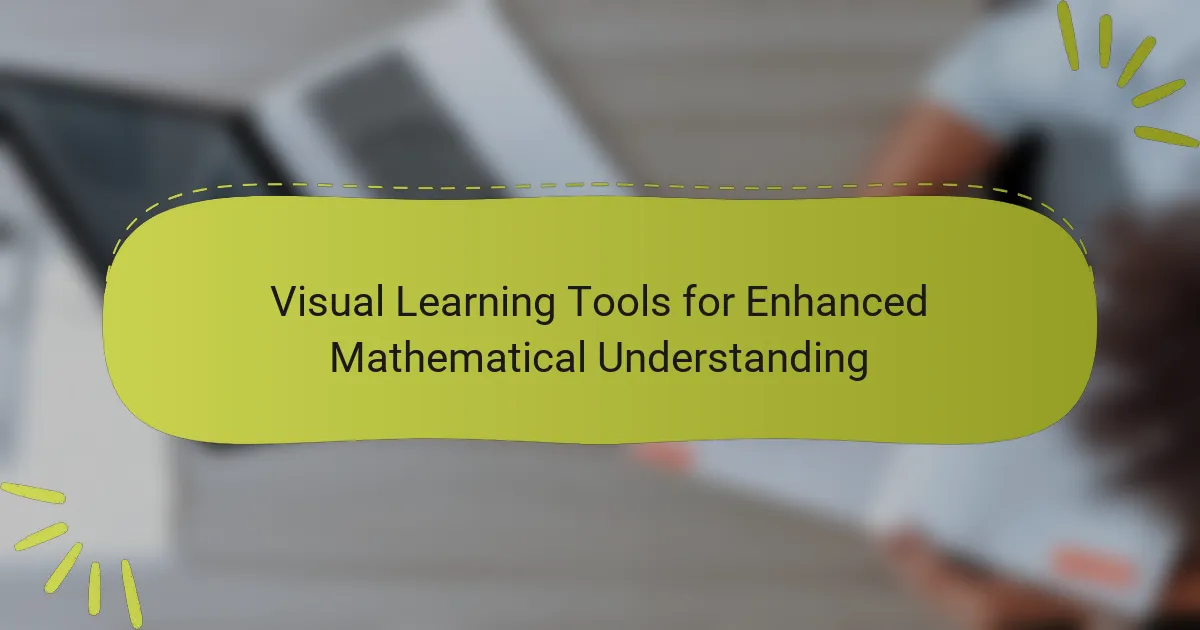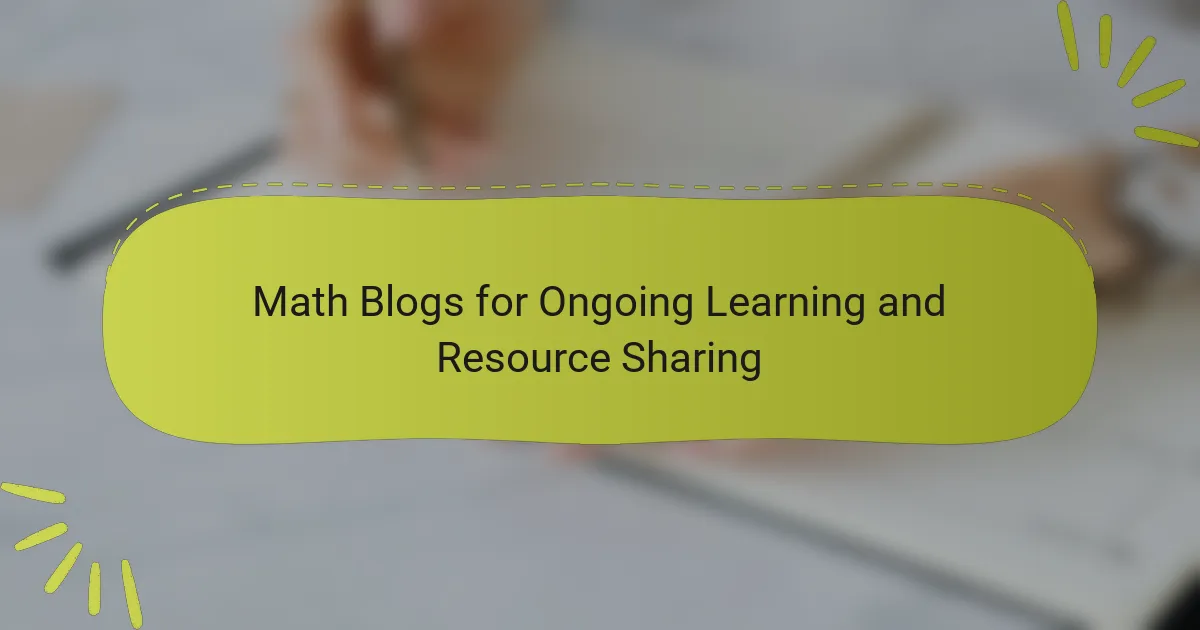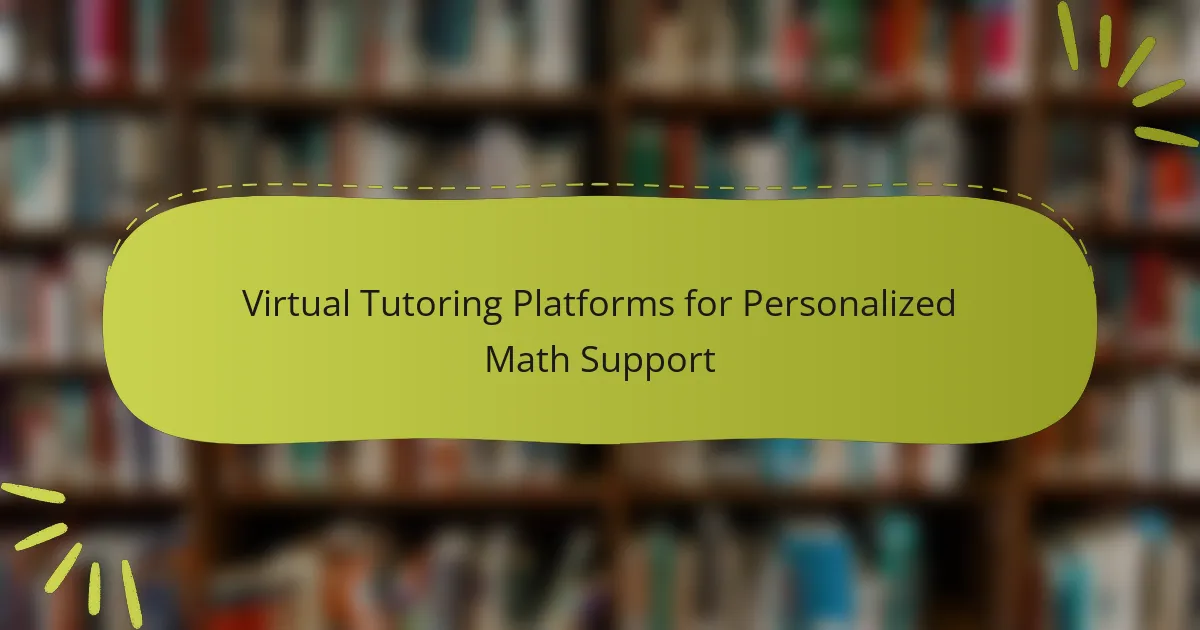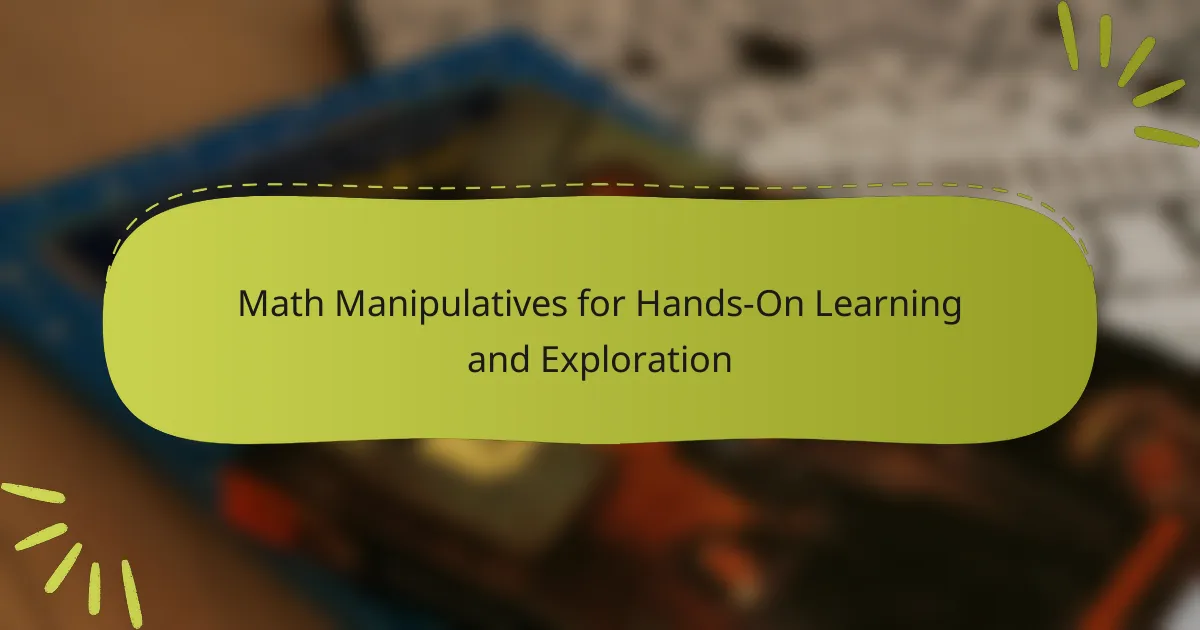Curriculum-aligned math resources are educational materials that support specific learning standards in mathematics. These resources encompass textbooks, worksheets, online platforms, and interactive tools, all designed to enhance student understanding and improve achievement. Research indicates that using these aligned materials leads to higher standardized test scores and facilitates differentiated instruction to meet diverse learning needs. Effective implementation involves integrating these resources into lesson plans, assessing student needs, and leveraging technology for accessibility. Overall, curriculum-aligned math resources play a critical role in fostering effective teaching practices and enhancing student engagement in mathematics.
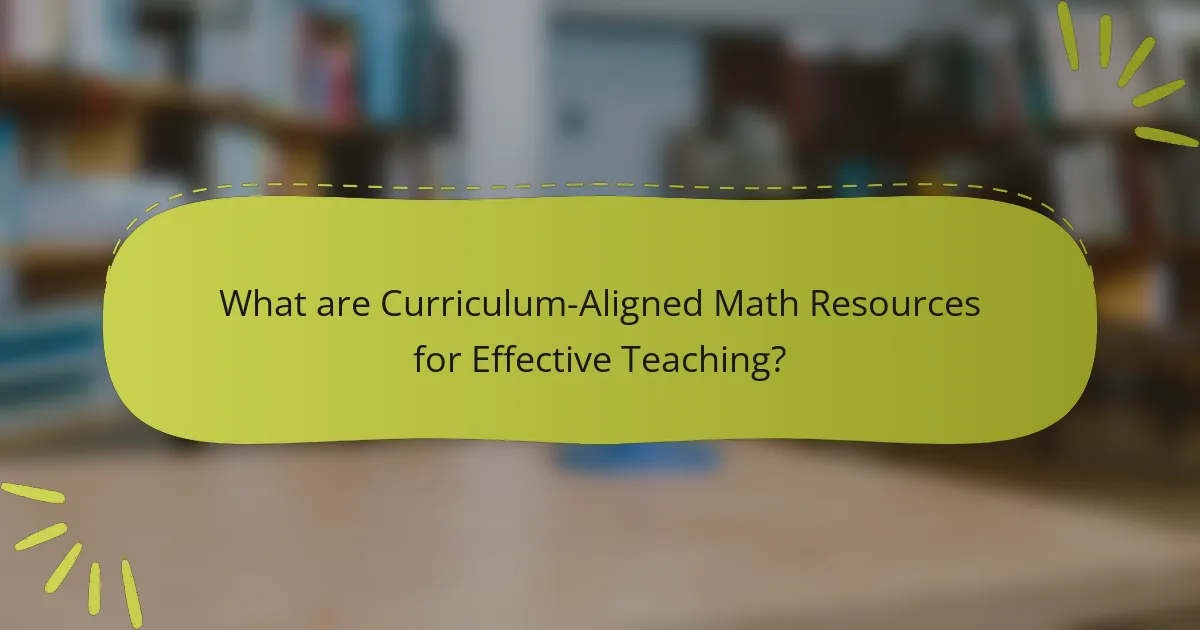
What are Curriculum-Aligned Math Resources for Effective Teaching?
Curriculum-aligned math resources for effective teaching are educational materials designed to support specific learning standards. These resources include textbooks, worksheets, online tools, and interactive activities. They ensure that instruction is consistent with curriculum goals. Effective teaching relies on these resources to enhance student understanding. Research shows that using aligned materials improves student achievement. For example, studies indicate that students using curriculum-aligned resources score higher on standardized tests. Such resources also facilitate differentiated instruction, catering to diverse learning needs. Overall, curriculum-aligned math resources are essential for fostering effective teaching practices.
How do Curriculum-Aligned Math Resources support teaching practices?
Curriculum-aligned math resources enhance teaching practices by providing structured content that aligns with educational standards. These resources ensure that lessons are relevant to the curriculum, facilitating effective knowledge transfer. They offer clear learning objectives, which help educators focus their instruction. Curriculum-aligned materials also include assessments that measure student understanding, allowing for targeted interventions. Research indicates that using these resources can improve student engagement and achievement. For instance, a study by the Institute of Education Sciences found that schools implementing aligned materials saw a 15% increase in math proficiency scores. This demonstrates the positive impact of curriculum-aligned math resources on teaching effectiveness.
What key features define effective Curriculum-Aligned Math Resources?
Effective Curriculum-Aligned Math Resources are characterized by their alignment to educational standards, relevance to student needs, and adaptability for diverse learning styles. They ensure that content matches curriculum objectives, promoting comprehensive understanding of mathematical concepts. These resources often include interactive elements, such as manipulatives or digital tools, which enhance engagement and facilitate experiential learning. Additionally, they provide clear instructional guidance for educators, supporting effective teaching strategies. Research shows that resources aligned with curriculum standards significantly improve student performance, as they focus on essential skills and concepts. Studies indicate that using such resources can lead to a 20% increase in student achievement in mathematics.
How do these resources align with educational standards?
These resources align with educational standards by directly addressing key learning objectives. They are designed to meet specific curriculum requirements set by educational authorities. For example, they incorporate standards from the Common Core State Standards (CCSS) for mathematics. These standards emphasize critical thinking and problem-solving skills. Additionally, the resources provide assessments that reflect these standards. They also include instructional strategies that support diverse learning needs. This ensures all students can achieve proficiency in math concepts. Furthermore, alignment is verified through reviews by educational experts. This process confirms that the resources effectively support teaching and learning goals.
Why is alignment with curriculum important in math education?
Alignment with curriculum is crucial in math education to ensure consistency and coherence in learning objectives. It provides a structured framework that guides educators in delivering content effectively. Curriculum alignment helps in identifying key concepts and skills that students need to master at each grade level. This alignment facilitates the integration of assessments that accurately measure student understanding. Research indicates that aligned curriculum improves student achievement by 20% (Marzano, 2003). Furthermore, it supports differentiated instruction by allowing teachers to tailor lessons to meet diverse student needs. Overall, alignment with curriculum enhances educational quality and student outcomes in math education.
What are the consequences of using non-aligned resources?
Using non-aligned resources can lead to ineffective teaching outcomes. These resources may not support the curriculum objectives. Consequently, students may struggle to grasp key concepts. Misalignment can result in gaps in knowledge and skills. Teachers may find it challenging to assess student understanding accurately. Additionally, non-aligned resources can cause confusion among students. Research indicates that alignment with standards improves student performance. For example, a study by the Institute for Education Sciences found that curriculum alignment is crucial for educational success.
How does curriculum alignment enhance student learning outcomes?
Curriculum alignment enhances student learning outcomes by ensuring that educational content matches learning standards and assessments. This alignment provides a coherent educational framework. It allows educators to systematically address the skills and knowledge students need to succeed. Research shows that aligned curricula lead to improved academic performance. For example, a study by the Institute of Education Sciences found that schools with aligned curricula saw a 10-15% increase in student test scores. This evidence supports the connection between alignment and enhanced learning outcomes.
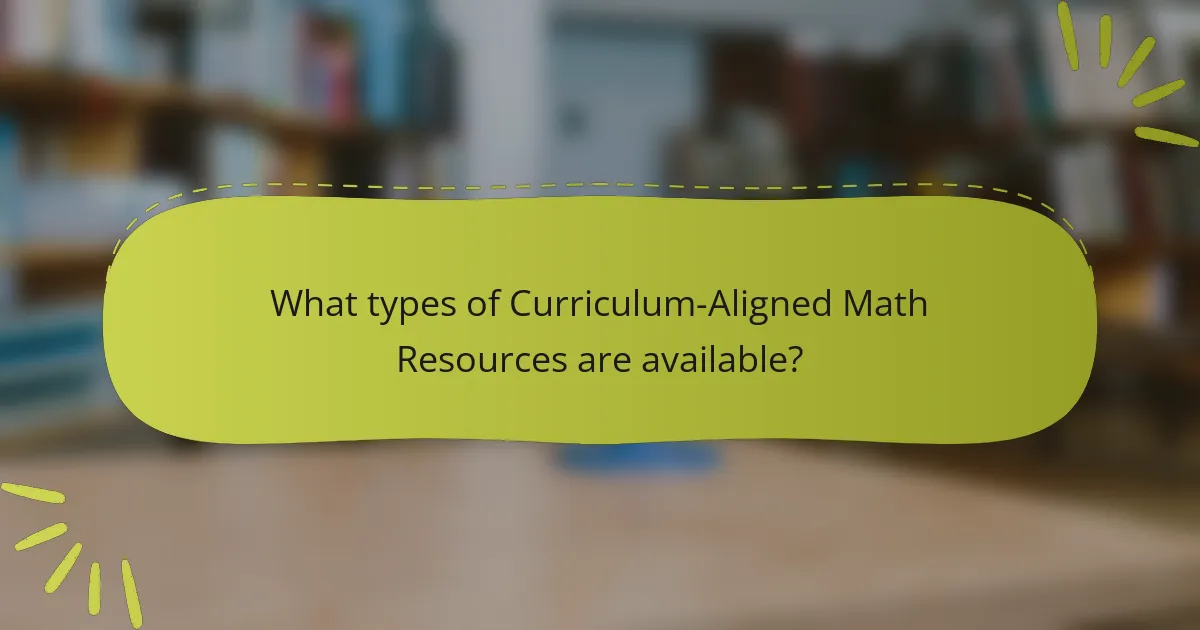
What types of Curriculum-Aligned Math Resources are available?
Curriculum-aligned math resources include textbooks, online platforms, worksheets, and interactive tools. Textbooks provide structured content that aligns with educational standards. Online platforms often offer adaptive learning experiences tailored to individual student needs. Worksheets reinforce concepts through practice problems and exercises. Interactive tools, such as math games and simulations, engage students in hands-on learning. These resources support teachers in delivering effective instruction. They also help students meet learning objectives set by educational curricula.
What are the different formats of Curriculum-Aligned Math Resources?
Curriculum-aligned math resources come in various formats. These formats include worksheets, digital resources, interactive games, and lesson plans. Worksheets provide practice problems aligned with specific learning objectives. Digital resources often include online platforms that offer interactive lessons and assessments. Interactive games engage students in learning through play while reinforcing math concepts. Lesson plans offer structured guidance for educators to deliver content effectively. Each format serves distinct purposes and caters to different learning styles. These diverse formats ensure comprehensive coverage of curriculum standards and enhance student understanding.
How do digital resources differ from traditional resources?
Digital resources differ from traditional resources primarily in their format and accessibility. Digital resources are available online and can be accessed instantly from various devices. Traditional resources, such as textbooks, require physical handling and may not be readily available at all times. Digital resources often include interactive elements, enhancing engagement and understanding. In contrast, traditional resources are typically static and do not offer interactive features. Digital resources can be updated easily to reflect current information, while traditional resources may become outdated quickly. Furthermore, digital resources often provide analytics and tracking capabilities for educators, which traditional resources do not offer. This makes digital resources more adaptable to individual learning needs.
What role do manipulatives play in math teaching resources?
Manipulatives are physical objects used to teach mathematical concepts. They help students visualize and understand abstract ideas. By engaging with manipulatives, learners can explore relationships and patterns in math. This hands-on approach promotes active learning and fosters deeper comprehension. Research shows that manipulatives improve problem-solving skills and retention of mathematical concepts. Studies indicate that students using manipulatives outperform peers relying solely on traditional methods. For example, a study by Moyer et al. (2005) found significant gains in student understanding when manipulatives were integrated into lessons. Therefore, manipulatives play a crucial role in enhancing math teaching resources.
What specific math topics can be covered with these resources?
Algebra, geometry, statistics, and calculus are specific math topics that can be covered with these resources. Algebra includes solving equations and understanding functions. Geometry involves shapes, angles, and theorems. Statistics covers data analysis and probability. Calculus focuses on limits, derivatives, and integrals. These resources provide structured lessons aligned with curriculum standards. They enhance understanding through practical examples and exercises. Each topic is designed to build foundational skills. Comprehensive coverage ensures students grasp key concepts effectively.
Which resources are best for teaching algebra concepts?
Online platforms like Khan Academy and IXL are excellent resources for teaching algebra concepts. Khan Academy offers comprehensive video tutorials and practice exercises. IXL provides personalized learning experiences with instant feedback. Textbooks such as “Algebra 1” by McDougal Littell are also valuable. They present concepts in a structured way with practice problems. Additionally, interactive tools like Desmos allow for visual learning of algebraic concepts. These resources are widely used and supported by educational research. Studies show that interactive and multimedia resources enhance student understanding of algebra.
How can resources be tailored for geometry instruction?
Resources can be tailored for geometry instruction by aligning them with specific curriculum standards. This ensures that materials meet educational goals and learning outcomes. Customizing resources involves selecting activities that focus on key geometric concepts such as shapes, angles, and spatial reasoning. Incorporating technology, like geometry software or interactive apps, enhances student engagement and understanding. Additionally, using real-world examples helps students connect abstract concepts to practical applications. Differentiating resources to cater to various learning styles supports diverse student needs. Regular assessment tools can also be integrated to measure student progress effectively. These strategies collectively create a focused and effective geometry instruction framework.
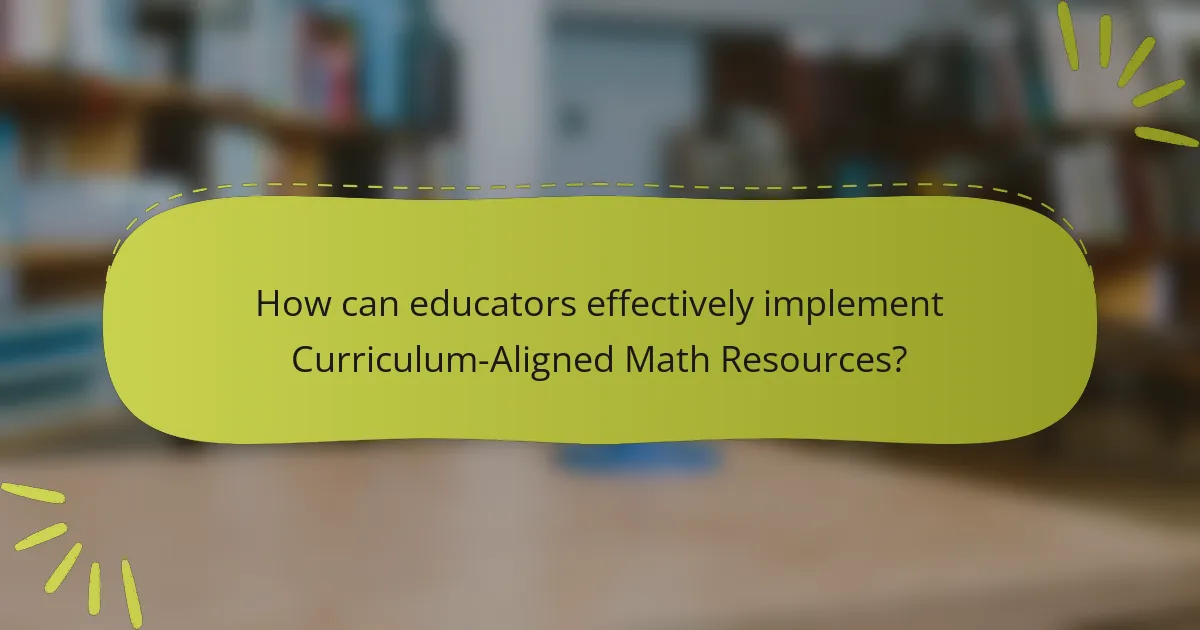
How can educators effectively implement Curriculum-Aligned Math Resources?
Educators can effectively implement curriculum-aligned math resources by integrating them into lesson plans. This involves selecting resources that match specific learning objectives. Teachers should assess students’ needs to tailor the resources accordingly. Professional development can enhance educators’ understanding of these resources. Collaboration among educators can lead to shared strategies for implementation. Utilizing technology can streamline access to curriculum-aligned materials. Regular feedback from students helps refine the use of these resources. Research shows that alignment improves student engagement and achievement in math.
What strategies can teachers use to integrate these resources into their lessons?
Teachers can integrate curriculum-aligned math resources into their lessons by using hands-on activities. Incorporating manipulatives allows students to visualize mathematical concepts. Teachers can also utilize technology, such as interactive software or apps, to engage learners. Group activities promote collaboration and problem-solving skills among students. Additionally, real-world applications can make math relevant and interesting. Teachers should align resources with learning objectives to ensure coherence in instruction. Regular assessments can help track student progress and adjust strategies accordingly. These methods enhance understanding and retention of mathematical concepts.
How can teachers assess the effectiveness of the resources used?
Teachers can assess the effectiveness of the resources used by evaluating student performance and engagement. They can analyze assessment scores before and after resource implementation. Surveys can gather student feedback on resource usefulness. Observations during lessons provide insights into engagement levels. Comparing outcomes across different resources can identify the most effective options. Data from standardized tests can also indicate resource impact. Utilizing these methods allows for a comprehensive assessment of resource effectiveness.
What are best practices for combining resources with hands-on activities?
Best practices for combining resources with hands-on activities include aligning resources with learning objectives. This ensures that the activities support specific curriculum goals. Selecting diverse resources enhances engagement. For instance, using visual aids alongside manipulatives caters to different learning styles. Incorporating technology can provide interactive experiences, making concepts more accessible. Planning assessments that reflect both resource use and hands-on activities is crucial. Research shows that students retain information better when they actively engage in learning. For example, a study by Hattie (2009) emphasizes that active learning strategies significantly improve student outcomes.
What challenges might educators face when using Curriculum-Aligned Math Resources?
Educators may face several challenges when using Curriculum-Aligned Math Resources. One significant challenge is the alignment of resources with specific curriculum standards. Not all resources are consistently updated to reflect the latest educational standards. This misalignment can lead to gaps in student understanding.
Another challenge is the varying levels of student proficiency. Curriculum-aligned resources may not cater to diverse learning needs. This can make it difficult for educators to ensure that all students progress effectively.
Additionally, educators might encounter limited training on how to effectively implement these resources. Without proper training, educators may struggle to maximize the potential of the materials.
Access to technology can also be a barrier. Some resources require specific software or hardware, which may not be available to all students.
Lastly, time constraints can hinder the effective integration of these resources into lesson plans. Educators often have limited time to plan and execute lessons, impacting their ability to utilize these materials fully.
How can teachers overcome common obstacles in resource implementation?
Teachers can overcome common obstacles in resource implementation by utilizing strategic planning and collaboration. Effective planning allows teachers to identify specific resource needs aligned with curriculum goals. Collaboration with colleagues fosters shared insights and collective problem-solving. Professional development enhances teachers’ skills in resource utilization. Access to training programs can increase confidence and competence in using new materials. Regular feedback from students helps teachers adjust resources to better meet learning needs. Finally, leveraging technology can streamline resource management and accessibility. These strategies collectively improve the success of resource implementation in educational settings.
What support systems can assist educators in resource utilization?
Support systems that assist educators in resource utilization include professional development programs and collaborative networks. Professional development programs provide training on effective resource use. These programs often include workshops and online courses. Collaborative networks facilitate sharing of resources among educators. They encourage collaboration through platforms like teacher forums and social media groups. Educational technology tools also support resource management. They help educators organize and access materials efficiently. Research indicates that these systems improve teaching practices and resource allocation. For example, a study by the American Educational Research Association found that professional development enhances resource utilization by 30%.
What tips can enhance the use of Curriculum-Aligned Math Resources in teaching?
Utilizing Curriculum-Aligned Math Resources effectively requires strategic approaches. First, align resources with specific learning objectives. This ensures that each resource directly supports the curriculum goals. Second, incorporate a variety of resource formats. Using videos, interactive tools, and worksheets caters to diverse learning styles. Third, provide real-world applications of math concepts. This enhances student engagement and understanding. Fourth, encourage collaborative learning through group activities. Collaboration fosters deeper comprehension of mathematical concepts. Fifth, regularly assess and adapt resources based on student feedback. This ensures that the resources remain relevant and effective. Finally, integrate technology to facilitate access and interaction with resources. Studies show that technology can enhance learning outcomes in math education.
Curriculum-aligned math resources are educational materials designed to support specific learning standards in mathematics education. These resources, including textbooks, worksheets, and interactive tools, enhance teaching effectiveness by ensuring alignment with curriculum goals and facilitating differentiated instruction. The article discusses key features of effective curriculum-aligned resources, their alignment with educational standards, and the positive impact on student learning outcomes. Additionally, it addresses the challenges educators face in implementing these resources and offers strategies for effective integration into teaching practices. Overall, the article emphasizes the importance of using curriculum-aligned resources to improve student achievement in mathematics.
